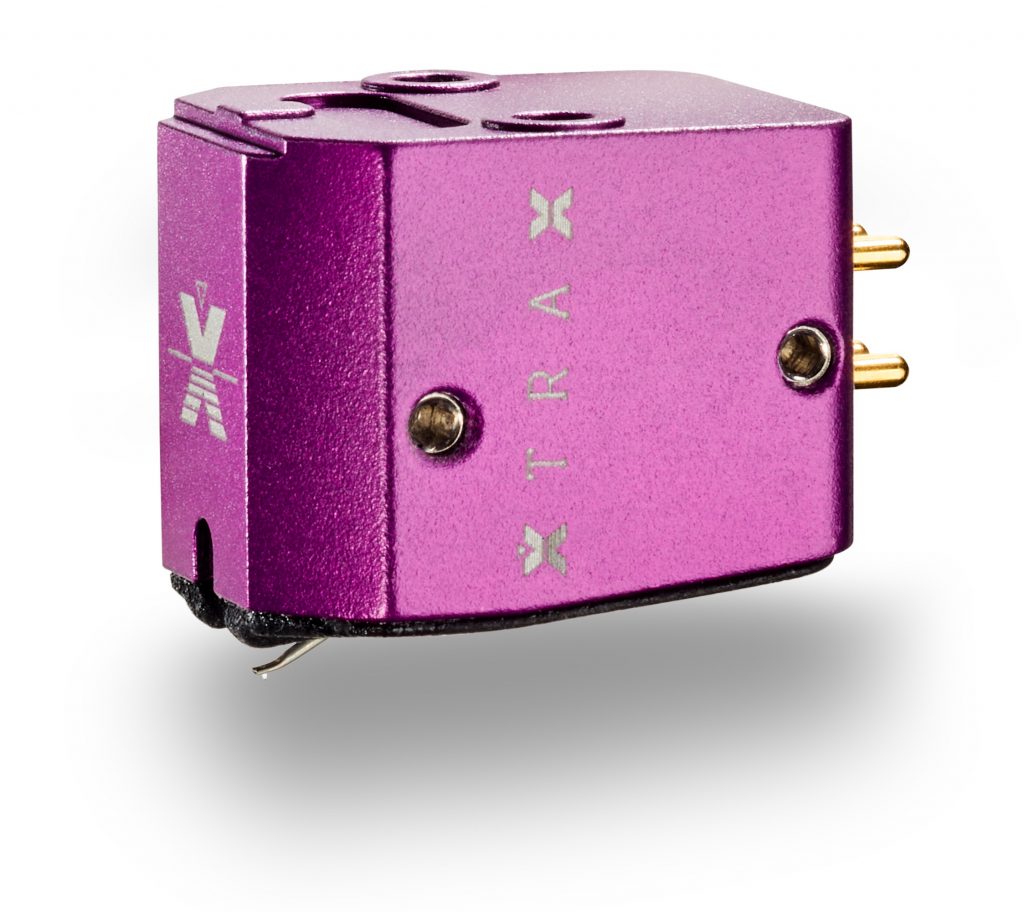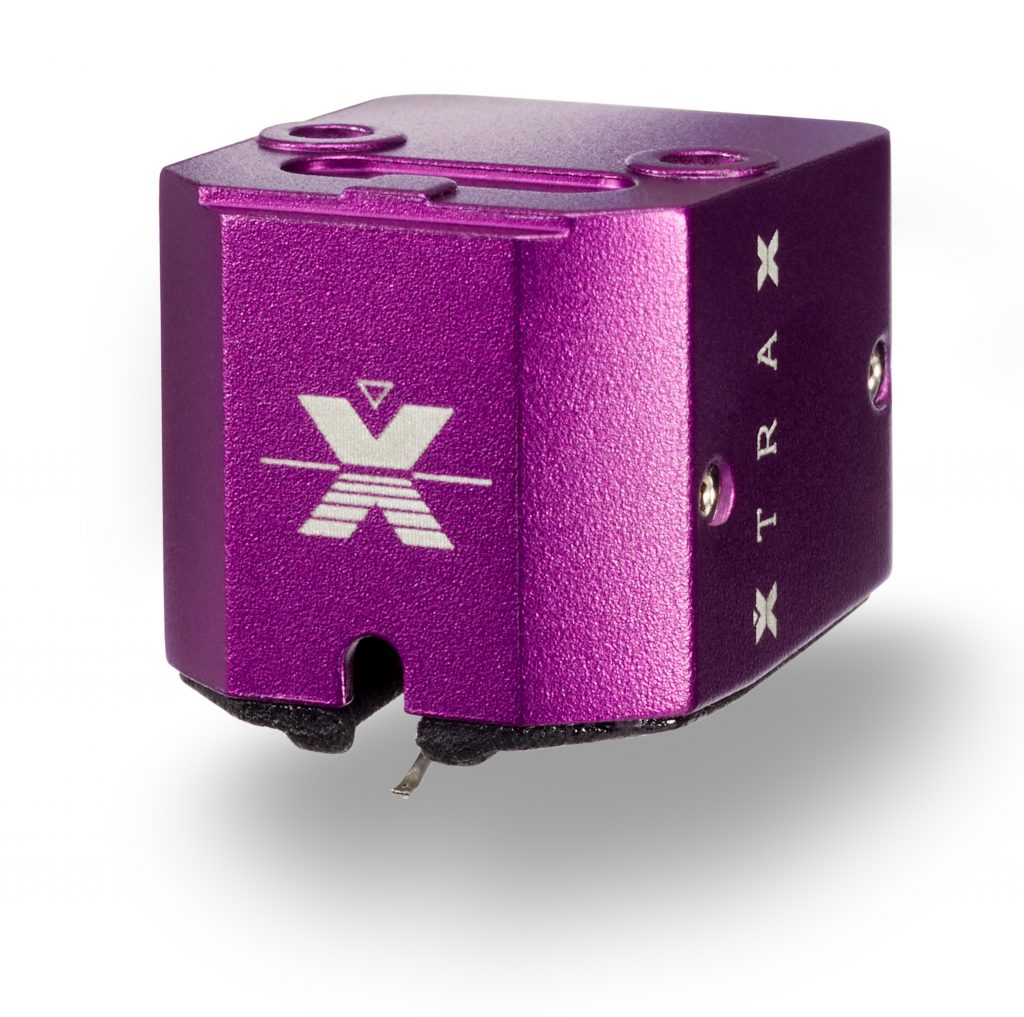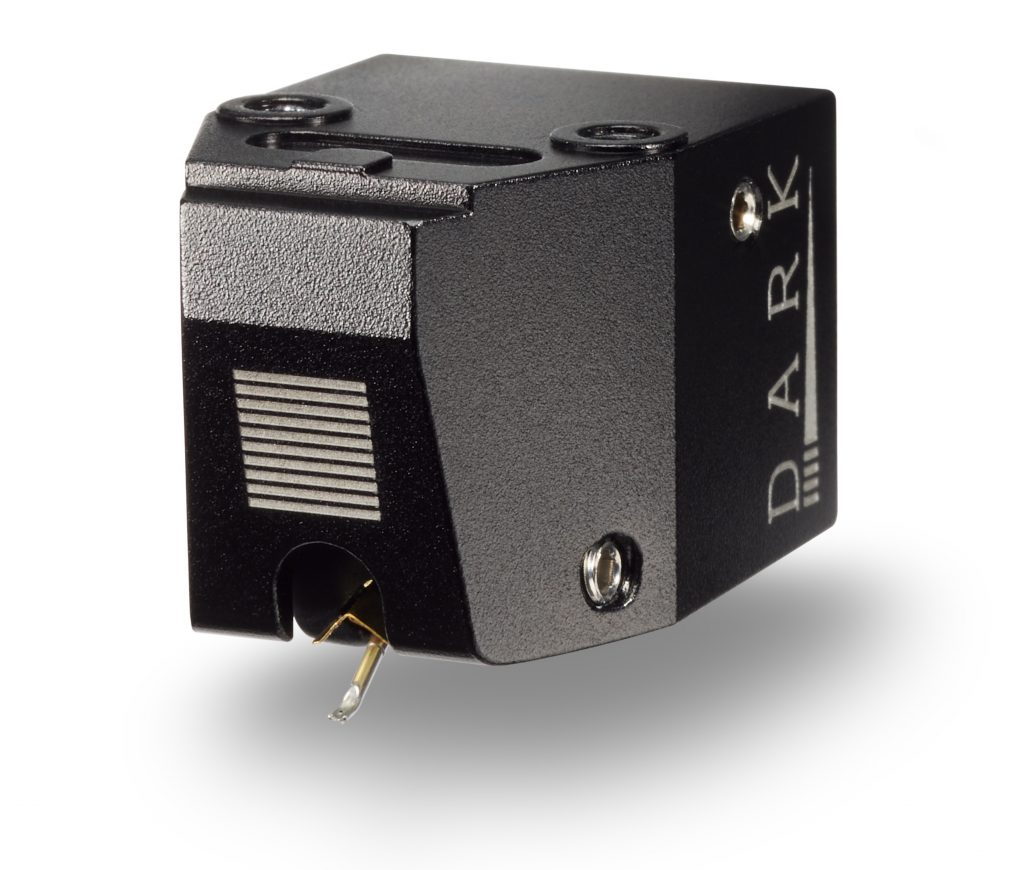Touraj Moghaddam, the founder and chief designer of Vertere, explained and demonstrated the advances in cartridge design he has made in the past year.
Touraj launched the XtraX moving coil cartridge and Dark Sabre moving magnet cartridge, which are significant improvements over their predecessors, which will now sit beneath them in the Vertere cartridge range. The prices are £5800, €6998, $6499 and £1450, €1798, $1599 respectively. Both cartridges will be available from the end of October.
Touraj explained to the select press audience that design choices determine material choices, and using unobtanium may be ideal for the press release and the salesperson’s story, but that may be the only benefit.
There are many approaches to designing a product: some are just building on a previous design by empirical methods – trial and error by another name; some go back to first principles, and some just look at what is available from the market or OEM source and make small changes to bring differentiation.
As was quite clear from the presentation and demonstrations by Touraj, his designs are driven by first principles but aided by years of experimentation and experience.
OK, he will admit the purple colour of the XtraX is to keep marketing happy. It makes no difference to the performance, but the hard anodising that enables the purple finish does assist the overall performance by being a tough, rigid shell.

What makes XtraX special
XtraX follows Vertere’s hugely popular Mystic moving coil cartridge and improves upon it in every area. Lower tip mass, a stiffer, faster cantilever attached to a very low mass cross coil in a time-constant magnetic – a combination known internally as “Direct Drive” – delivers a highly musical, high definition, and powerful, engaging performance.
The XtraX Moving Coil in bullets
- The body is precision CNC machined from solid aluminium alloy and hard anodised.
- Threaded body to accept the supplied stainless steel thumb screws for correct coupling of the cartridge body to the tonearm headshell.
- Three specifically designed contact points CNC machined into the top of the body that provide the exact mechanical coupling required.
- Alignment ridge on the front top that assists mounting XtraX to any Vertere tonearm.
- The low-mass generator utilises a Samarium-Cobalt magnet with a low-mass cross coil made of pure virgin copper wires.
- The low-mass generator is mounted into the high-mass body using a Quad-Point Contact with Four Stainless’ Spike’ Screws for optimum support and control of unwanted mechanical vibrations.
- The telescopic aluminium tube cantilever utilising two different aluminium materials – maximises stiffness without a massive high Q peak.
- Nude Micro Elliptical single crystal diamond stylus tip for maximum tracking ability without compromising the high-frequency response or increasing surface noise.
- Square shank diamond assembly maximises alignment precision, consistency and rigidity.
- Wideband frequency response of below 10Hz to 45kHz.
- Output of 0.45mV will provide a lifelike dynamic range with depth and precision.

What makes the Dark Sabre special
Traditionally, since the passing of the Shure V15 Mk3 and maybe the Mk4 moving magnet cartridges, they have tended to be seen and heard as low and middle-market products. In the last two or three years, a few more high-end moving magnet cartridges have been launched mainly to suit modern high-end integrated amplifiers – a relatively new market entrant. Vertere’s
Sabre, the high-end moving magnet cartridge, has been successful and brought a demand for an even further improved version.
With its single crystal, nude micro elliptical diamond and dual aluminium telescopic cantilever, Dark Sabre improves on Sabre significantly.

Dark Sabre high-end Moving Magnet in bullets
- Aluminium alloy body CNC precision machined from solid then hard anodised black.
- The low-mass generator utilises an Alnico magnet with a low-mass cross coil made of pure virgin copper wires.
- The low-mass generator is mounted into the high-mass body using a Quad-Point Contact with Four Stainless’ Spike’ Screws for optimum support and control of unwanted mechanical vibrations.
- The body is mass-tuned to the generator for optimum support of unwanted energy transfer.
- The telescopic aluminium tube cantilever utilising two different aluminium materials – maximises stiffness without a massive high Q peak.
- Nude Micro Elliptical single crystal diamond stylus tip for maximum tracking ability without compromising the high-frequency response or increasing surface noise.
- Square shank diamond assembly maximises alignment precision, consistency, and rigidity.
- Alignment ridge on the front top that assists mounting Sabre to any Vertere tonearm.
- Three specifically designed contact points CNC machined into the top of the body that provide the exact mechanical coupling required.
- Three specifically designed contact points CNC machined into the top of the body that provide the exact mechanical coupling required.\
- Wideband frequency response of below 14Hz to above 28kHz
- Output of 4.3mV will provide a lifelike dynamic range with depth and precision.

Background to Vertere Cartridge Design
Once the decision is final on the choice of generator system depending on the target market and, to a small extent, personal predilection, the key to designing – for all but the most extreme of high-end cartridges – is to balance the design parameters: to deliver a cartridge that stays in the groove, retrieves the maximum musical information and is least affected by old or damaged records.
Of course, there are extremes in the hi-fi world – extremes where the designer optimises one parameter almost to the exclusion of others – and these products are often the most talked about as they are loved or detested in spades. But this is not the Touraj way: he doesn’t want a system that favours closed-miked jazz over rock or symphonic over punk. He wants a system that allows most records in a collection to be played and enjoyed. In his view, a hi-fi enthusiast with a small record collection does not have the right system yet.
When Vertere launched the DG-1Turntable, Touraj said: “The job of a record player is straightforward and very linear. It has to allow the most accurate measurement of something going past the stylus and throwing it from side to side over 1000 times every centimetre.”
The cartridge’s job is to stand up to the mechanical torture of playing a record and deliver the most accurate representation of what was cut into the record’s groove as is possible.
Touraj explains the source of some of his background knowledge
“Our collaboration with music industry engineers has given us invaluable insights into the art of cutting. This knowledge has enabled us to advance our record player design in many ways to extract the maximum from vinyl records.
For example, with his recent remixes of the Beatles albums, Giles Martin – son of the late Sir George – used a Vertere MG-1 record player, including SG-1 tonearm and PHONO-1 preamplifier throughout, to check and approve the acetates and the test pressings.
We’ve worked closely with the multi-award-winning mastering engineer Miles Showell since February 2017. Miles has been using his own extensively customised Neumann VMS 80 lathe, incorporating Vertere cables, to cut normal and half-speed masters for the likes of ABBA, Cream, The Police and The Rolling Stones, and also the 50th-anniversary release of The Beatles’ Sgt Pepper’s Lonely Hearts Club Band and The Beatles (otherwise known as ‘The White Album’).
Working closely with Miles has led to the first releases on our record label Vertere Records. Releases: a three-track EP, and first album by Scottish band Caezar, and the first album by Dutch singer/songwriter Elles Springs, which was specially tape-transferred, and then half-speed mastered and cut by Miles for our label.
By involving ourselves at every stage of the record-making process, we can ensure our players bring you as close as possible to what the artists and engineers wanted you to hear.”
About Vertere
Reducing engineering to its fundamentals will get you closer to the original recording.
When aiming to reproduce the complexities of music, it’s all too easy to introduce even more significant complication in the engineering of audio equipment, putting in place one element to solve the problems until the whole design escalates into something fiendishly intricate – and expensive.
That’s not the Vertere way: coming at the whole problem with decades of audio and mechanical engineering experience, plus close collaboration with the recording and mastering industry, we step back, take a long, hard look at the fundamentals, and look for simple, elegant solutions.
That may sound like a simple ‘less is more’ philosophy, but we prefer to look at it this way: the best audio equipment shouldn’t add anything to or remove anything from the original recording. Instead, it should affect it as little as possible, bringing the listener ever closer to what the artist, producer and mastering engineer wanted you to hear.
